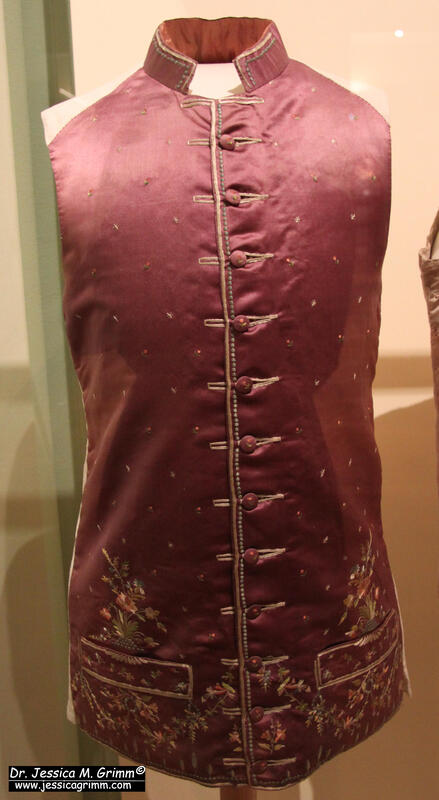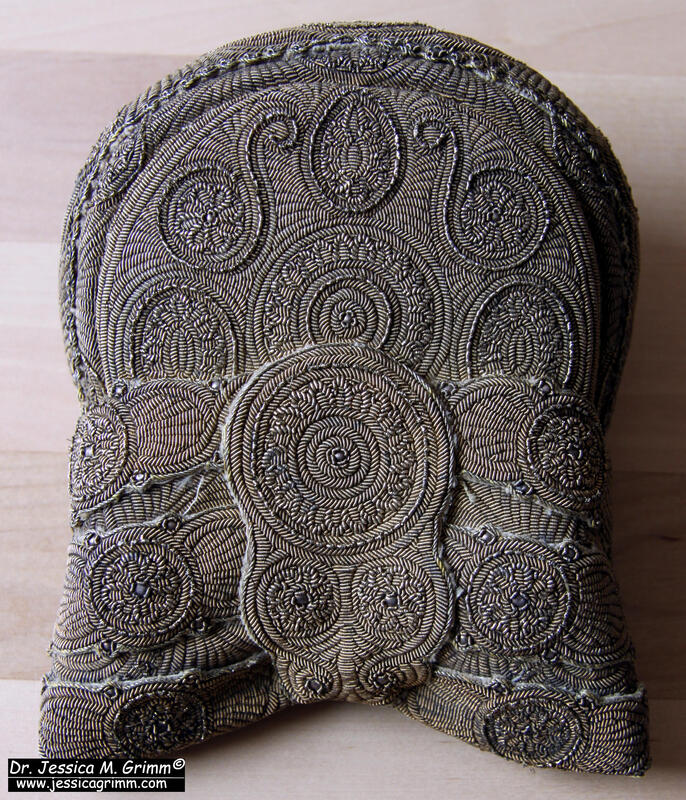|
Research into professional embroidery goes in and out of fashion. At the moment, it is clearly in fashion with many new exciting publications becoming available in Germany, France and Italy. In many cases, their analysis of the embroidery trade in the medieval period depends on a few older sources. One of these famous sources is Goetz 1911 on the silk embroiderers of Munich. Unfortunately for most of us, it is written in German with the added difficulty of being printed in Frakturschrift. And since it was written more than a hundred years ago, it is quite difficult to get hold of. A few weeks ago, I was able to buy a second-hand copy! And I started to translate it into English. Being originally written in old-fashioned German with at least half of it in medieval and early-modern German, translation was slow. And since these older versions of German are even more fond of VERY long sentences, the resulting English is not always pretty. But it will do! A PDF of the result is available at the end of this blog article :). So far, I have not been able to find out who the writer, Ms Gertrud Goetz, was. Since her article was published in the Journal of the Historical Society of Upper Bavaria, she was probably a member there. And the fact that she had access to the original historical sources and could decipher them, points at her being a historian or similar. The resulting article is really informative and quite lovely to read. One gains a lot of insight into the lives of embroiderers from the 15th- till the 18th-century. Throughout the centuries, three main adversaries tried to mess with the official embroiderers of Munich: women, people from Augsburg and the French. Some things never change, LOL. No seriously: this is actually really sad. Although the guild regulations of Munich are often quoted to prove that women were allowed to embroider, when you read the original texts, a different picture emerges. One we already know from the guild regulations in the Netherlands. Women were not excluded from the embroidery guilds, but in real-life they just did not become master craftswomen nor do we see them individually in official documents related to the guilds. Only one of the Munich historical sources mentions a woman: a master's widow with her son. And guess what: she is not playing by the rules. Neither are the others. But she is perceived as a problem. From what I deduct from the sources, the picture that emerges is this: In the beginning, the professional embroiderers of Munich were all male and they worked for the elite and the church. Since Munich was rather a large village than a metropolis, there was never really enough of this employment. The male embroiderers needed to supplement their schedule with 'simpler' work. Unfortunately for them, this was already the realm of women. One such item made by women was the Riegelhaube. This is a heavily gold-embroidered bonnet typical for the folk dress of the upper-middle class. In 1793, the only leftover embroidery master of Munich, Jakob Gelb, tries to forbid these practices by pressing the city council to hold a police raid. He even hands in a list with the addresses of the culprits. All women and a single man. And Jakob is not an unreasonable man: he demands that he can pull any of these illegal embroiderers in as workers when his workload demands it. Instead of giving them the same full rights to exercise the embroidery trade as he holds them, he wants these women to work for him when he so desires... Only three decades later, this results in new trade regulations for Bavaria. From now on, embroidery is a free trade exclusively executed by women. The reason for this: just like with other female occupations, embroidery is an occupation that does not require training nor learning. Just so you know! In order for you to study the original sources for yourself and to draw your own conclusion, please find a PDF of the original publication and my crude translation below:
Literature
Goetz, G., 1911. Die Münchener Handstickerei zur Zeit der zünftigen Gewerbeverfassung (1420-1825), Altbayerische Monatsschrift 10 5/6, p. 107-114. Wetter, E., 2012. Mittelalterliche Textilien III Stickerei bis um 1500 und figürlich gewebte Borten. Abegg Stiftung: Riggisberg. P.S. The publication mentions a roll of coats which contains eight coats of arms of embroiderers. These coats of arms display broche/brodse/Bretsche. Unfortunately, the name of the document is so vague, that the librarian of the Bayrische Nationalmuseum so far could not identify it.
11 Comments
30/11/2020 16:58:14
You are very welcome, Cindy! I hope some parts are useful for your own studies too. And I'll keep you posted as to when they find the manuscript with the coats of arms and the broche. However, we have had two world wars since this article was written and the librarian does not know what the article is talking about.
Reply
Betsy
30/11/2020 16:48:30
Thank you so much for translating into modern English! What a fascinating review of professional embroidery. Some things never change--pay the local government to get special privileges. Grin.
Reply
Štikar'ca
30/11/2020 17:05:50
Wow, what wonderful work you do. It's so refreshing to read your blog and feel your enthusiasm.
Reply
Štikar'ca
30/11/2020 22:35:47
I'm glad. 😊
Claire de Pourtalès
1/12/2020 06:26:22
Dear Jessica, I can't wait to read this! Thank you so much for your hard work! This is indeed dedication!
Reply
1/12/2020 10:30:59
You are very welcome, Claire! In the meantime, I have found some old French sources too... Might need your help :).
Reply
1/12/2020 10:41:02
I know! Or not, as the experts are unable to find the mentioned roll of arms :(. Such a shame. Hope to find more clues in further literature. I would love to know if the coats of arms look like the one from the broderers guild in London!
Reply
Your comment will be posted after it is approved.
Leave a Reply. |
Want to keep up with my embroidery adventures? Sign up for my weekly Newsletter to get notified of new blogs, courses and workshops!
Liked my blog? Please consider making a donation or becoming a Patron so that I can keep up the good work and my blog ad-free!
Categories
All
Archives
July 2024
|
||||||
Contact: info(at)jessicagrimm.com
Copyright Dr Jessica M. Grimm - Mandlweg 3, 82488 Ettal, Deutschland - +49(0)8822 2782219 (Monday, Tuesday, Friday & Saturday 9.00-17.00 CET)
Impressum - Legal Notice - Datenschutzerklärung - Privacy Policy - Webshop ABG - Widerrufsrecht - Disclaimer
Copyright Dr Jessica M. Grimm - Mandlweg 3, 82488 Ettal, Deutschland - +49(0)8822 2782219 (Monday, Tuesday, Friday & Saturday 9.00-17.00 CET)
Impressum - Legal Notice - Datenschutzerklärung - Privacy Policy - Webshop ABG - Widerrufsrecht - Disclaimer








 RSS Feed
RSS Feed